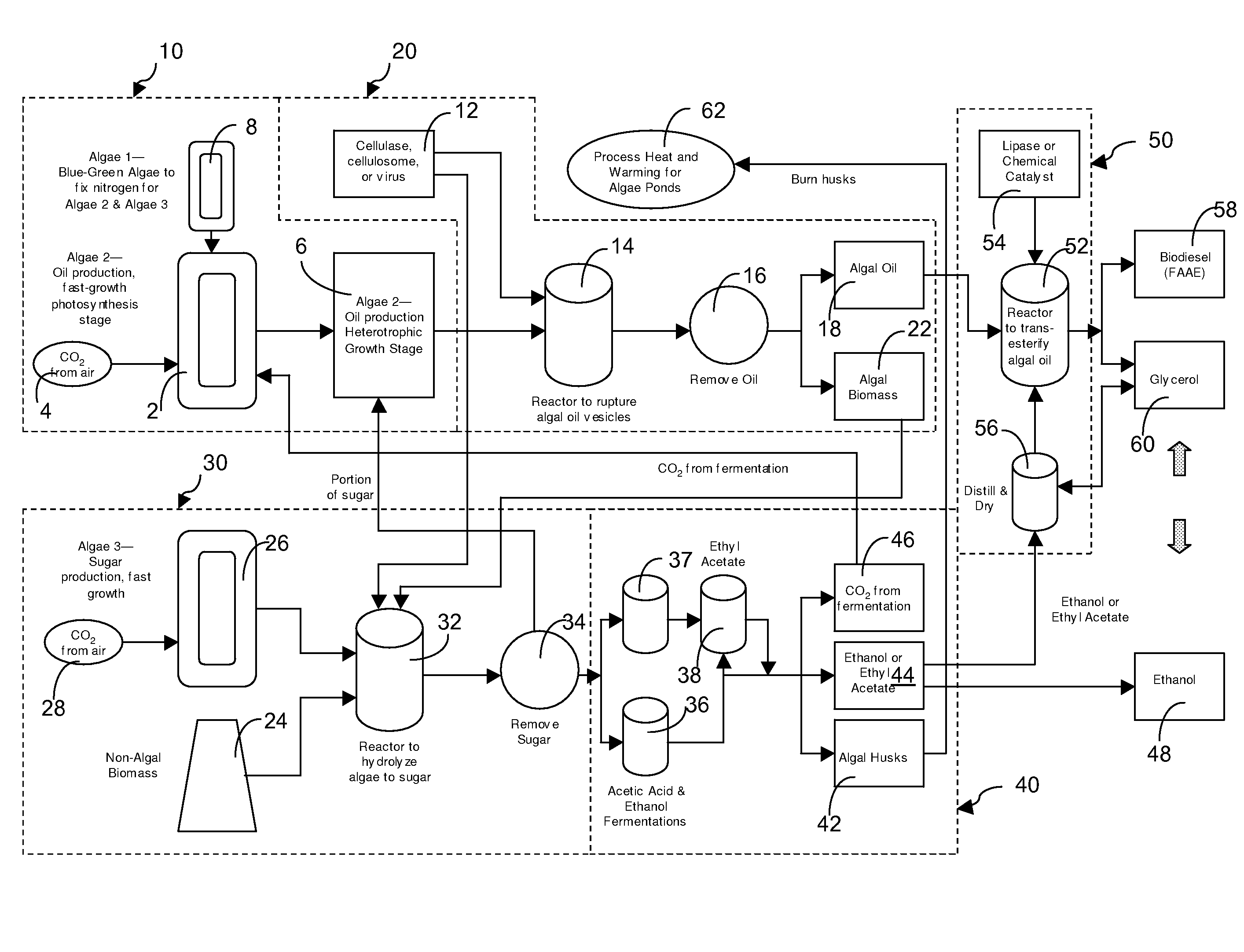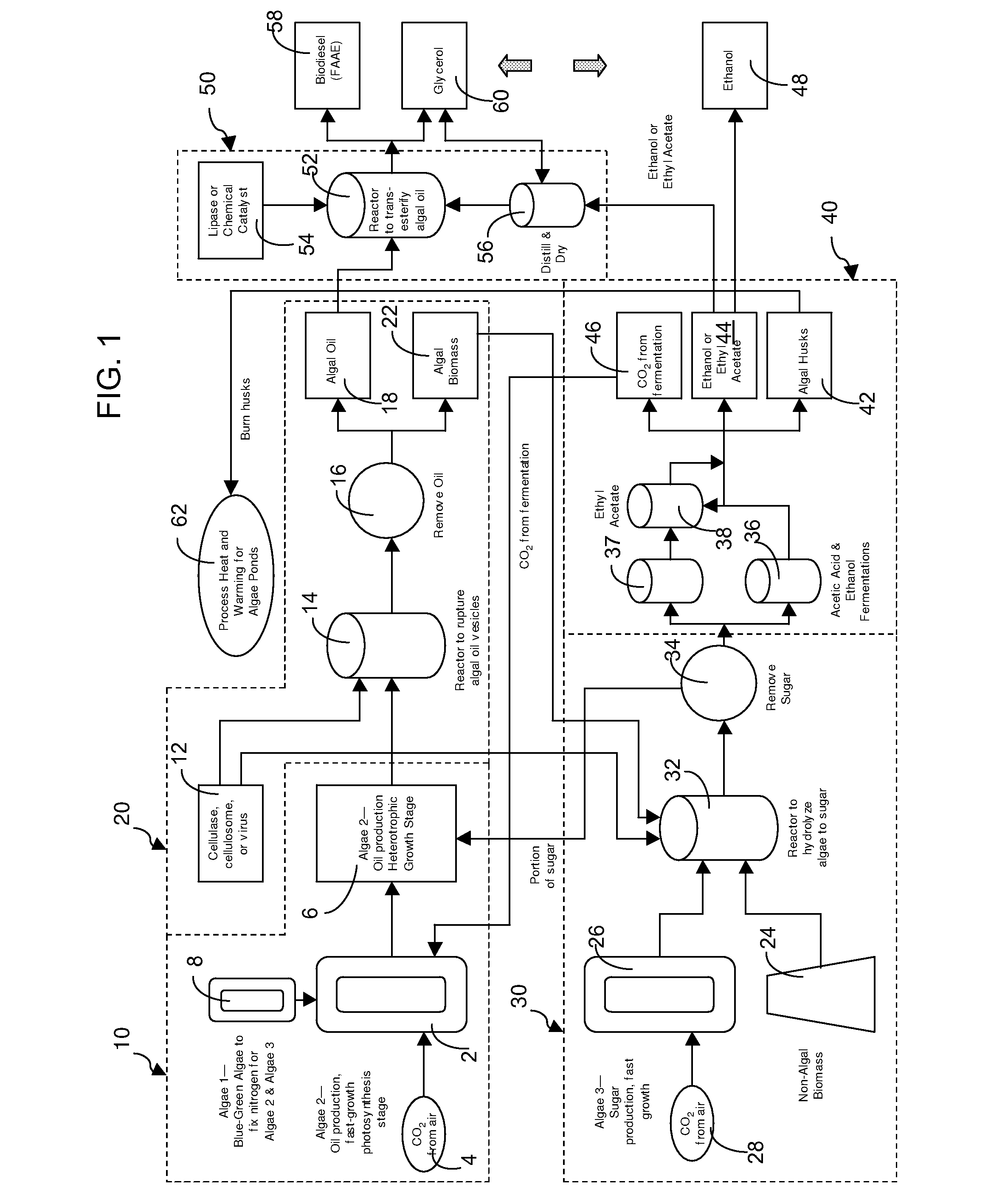Process of producing oil from algae using biological rupturing
a technology of biological rupturing and production process, which is applied in the direction of biomass after-treatment, sustainable manufacturing/processing, fatty-oil/fat refining, etc., can solve the problems of inability to meet the needs of the population. , to achieve the effect of rapid conversion
- Summary
- Abstract
- Description
- Claims
- Application Information
AI Technical Summary
Benefits of technology
Problems solved by technology
Method used
Image
Examples
Embodiment Construction
[0024]Before particular embodiments of the present invention are disclosed and described, it is to be understood that this invention is not limited to the particular process and materials disclosed herein as such may vary to some degree. It is also to be understood that the terminology used herein is used for the purpose of describing particular embodiments only and is not intended to be limiting, as the scope of the present invention will be defined only by the appended claims and equivalents thereof.
[0025]In describing and claiming the present invention, the following terminology will be used.
[0026]The singular forms “a,”“an,” and “the” include plural referents unless the context clearly dictates otherwise. Thus, for example, reference to “a step” includes reference to one or more of such steps.
[0027]As used herein, “reaction” is intended to cover single step and multi-step reactions which can be direct reactions of reactants to products or may include one or more intermediate spe...
PUM
| Property | Measurement | Unit |
|---|---|---|
| land area | aaaaa | aaaaa |
| land area | aaaaa | aaaaa |
| combustion efficiency | aaaaa | aaaaa |
Abstract
Description
Claims
Application Information
 Login to View More
Login to View More - R&D
- Intellectual Property
- Life Sciences
- Materials
- Tech Scout
- Unparalleled Data Quality
- Higher Quality Content
- 60% Fewer Hallucinations
Browse by: Latest US Patents, China's latest patents, Technical Efficacy Thesaurus, Application Domain, Technology Topic, Popular Technical Reports.
© 2025 PatSnap. All rights reserved.Legal|Privacy policy|Modern Slavery Act Transparency Statement|Sitemap|About US| Contact US: help@patsnap.com


